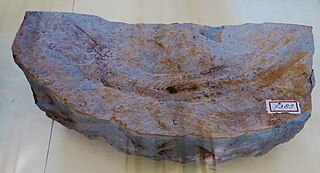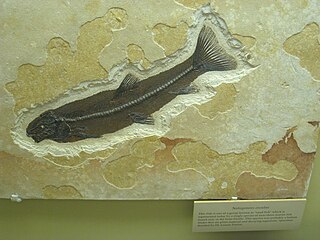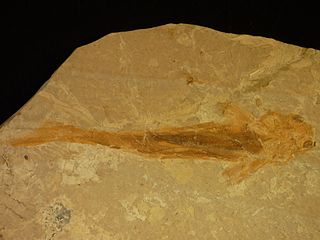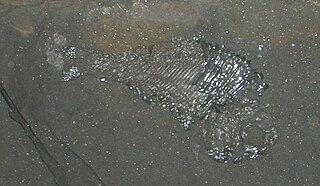
Echidnocephalus troscheli is an extinct, prehistoric halosaur. Fossils are found from Campanian strata of Westphalia, Germany. The complete and incomplete fossil specimens that have been found suggest an animal already looking very much like modern halosaurs.
Casierius is an extinct genus of prehistoric bony fish that lived during the Albian stage of the Early Cretaceous epoch. It is one of the oldest eels. The fossils of this animal were found in Glen Rose Formation near, Hood County, Texas.

Sinocoelacanthus is an extinct genus of prehistoric coelacanth that lived during the Early Triassic epoch.

Garnbergia is an extinct genus of prehistoric bony fish that lived during the Anisian stage of the Middle Triassic epoch.
Palaeophichthys is an extinct genus of prehistoric bony fish that lived during the Desmoinsian stage of the Pennsylvanian epoch.
Prolates is an extinct genus of prehistoric bony fish.
Protautoga is an extinct genus of prehistoric ray-finned fish, that lived in the Middle Miocene. Fossils have been found in the Paraná Formation of Argentina and the Calvert Formation of Virginia.
Egertonia is an extinct genus of prehistoric bony fish. The earliest occurrences of the genus in the fossil record are from the Late Cretaceous of Madagascar and India.
Graphiuricthys is an extinct genus of prehistoric bony fish.
Litoptychius is an extinct genus of prehistoric bony fish.

Notagogus is an extinct genus of prehistoric bony fish. They can be found in the Solnhofen Plattenkalk.

Notogoneus is an extinct genus of prehistoric ray-finned fish. A trace fossil attributed to Notogoneus osculus has been found in the Green River Formation.
Macrosemius is an extinct genus of prehistoric bony fish.
Paralbula is an extinct genus of prehistoric bony fish. They can be found in the Hell Creek Formation, in Montana, United States.

Paralepidotus is an extinct genus of prehistoric ray-finned fish.

Pleuropholis is an extinct genus of prehistoric bony fish.

Peipiaosteus is an extinct genus of prehistoric ray-finned fish, closely related to living sturgeon and paddlefish. Its fossils are found in the Early Cretaceous Jiufotang Formation, Pani Lake, Liaoning Province, China.

Peltopleurus is an extinct genus of prehistoric bony fish. Two species are currently recognised as valid: Peltopleurus lissocephalus and Peltopleurus tyrannos.
Platysiagum is an extinct genus of prehistoric bony fish.
Tarasiiformes is an extinct order of prehistoric ray-finned fish.









